As a blogger, I frequently find myself behind-the-times…intrigued by themes exposed in that weekend’s PGA play…which means they’re behind-the-times even if I hit “publish” on Monday. I found myself in a similar situation this weekend, while considering one hole at the TPC Sawgrass Stadium course.
The good news (a first for me!): The theme this hole inspired remains relevant as 2021 is a strange year that, thanks to last year’s COVID cancellation, will feature three major golf tournaments hosted at Pete Dye designs (note lowercase “major,” Players haters).
Pete Dye’s not the first name that comes to mind when you think “templates,” but he’s got them. The most prominent (and worst) was on full display this weekend, as Sawgrass’s famous island par three turned Thursday into an Italian horror film for many pros. Dye’s second most-popular template, which can be found across almost every one of his designs, is the Double Dogleg par five, a concept he took from A.W. Tillinghast and now truly owns. Even Tillinghast (Dylan) would have to admit Dye’s (Hendrix) version was better.
Dye liberally used another concept that was popularized by another architect, and this one is far less recognizable to the average GCA enthusiast…intentionally so. Dye certainly liked to play the “wild card” persona, which meant going out of his way to make it appear he wasn’t just copping a look from the MacRaynor factory when working with perhaps the most revered template of them all.
Here’s how Pete Dye took radical approaches to the Redan, and where you’ll see them during the 2021 championship season (plus a few bonus versions).
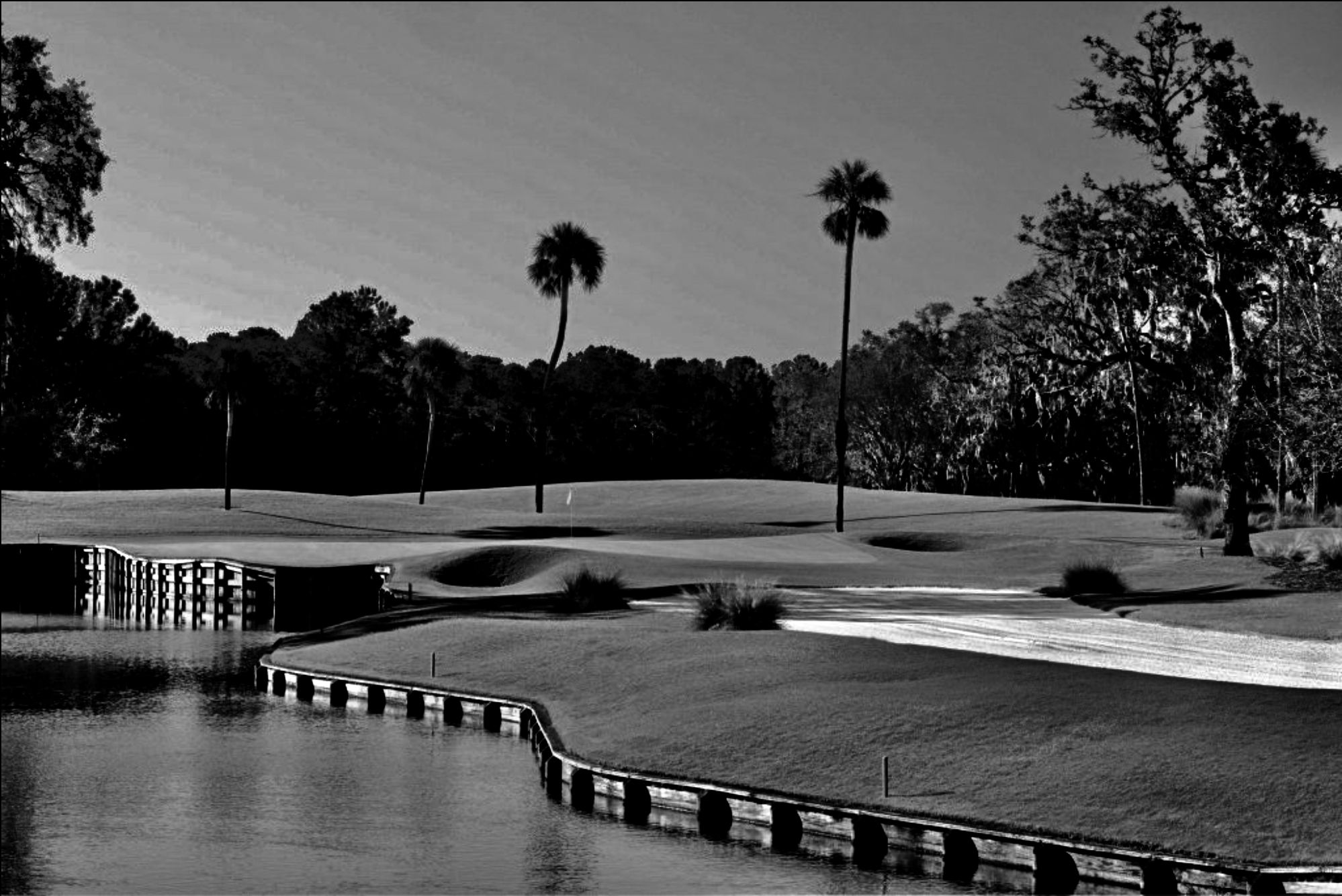
No. 13 at TPC Sawgrass (Stadium)
This is the most genre-bending entry on the list, and The Players just occurred, so we might as well get it out of the way. The big question is, of course, whether No. 13 truly constitutes a “Redan.”
There are strong reasons to say “no.” The distance is a little short (at 181 yards, it’s about 10 short of a traditional Redan) but the bigger obstacle is just how simple it is for skilled players to ignore the Redan function. Consider Im Sugjae’s ace during The Players 2019: The landing area is large enough that Im can land and bring the ball backwards into the hole. I don’t want to say that’s an impossible move on more classical Redans but…it definitely gives pause.
That said, the inside of the hole is well-guarded by both water and sand, and Im’s shot is much less likely for a player of my caliber. On a day-to-day basis, I probably need to attack the front of the green and use it to roll down to leftward pin positions…as a true Redan should work. In Dye’s take, the lower area of the green wraps around from front-left to back-right, so rather than the prescribed Redan approach, you’ll need to adjust your angle of attack depending on where the flag sits. All require careful use of the slope, however.
Depending on whether tweaks continue at the borderline-drivable par four No. 12, we may soon have another hole at TPC Sawgrass to consider the Redanicity of (although at this point it would not be a “Dye” hole, per se). Geoff Shackelford, among others, has suggested moving the teebox to make No. 12 play like world’s longest one-shot Redan.
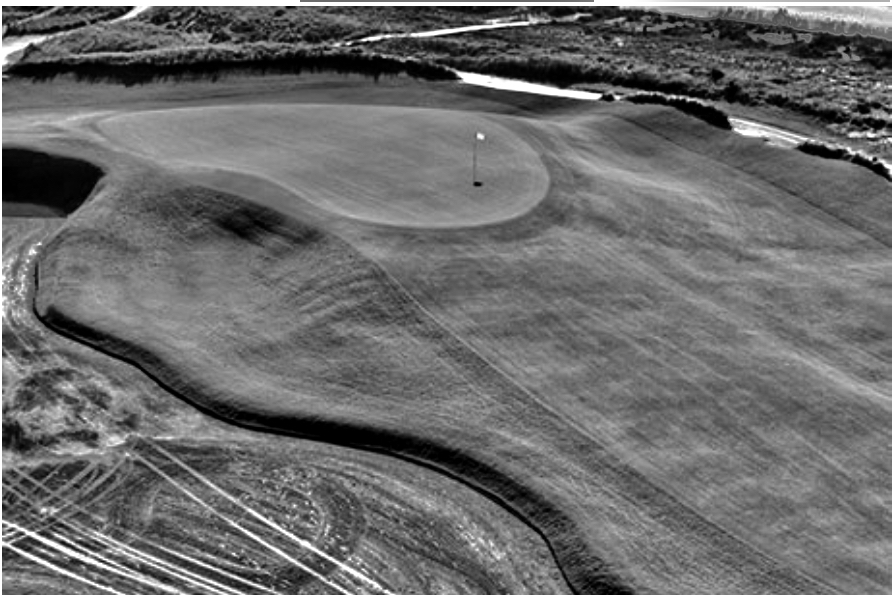
No. 14 at Kiawah (Ocean)
Let’s follow the most unconventional entry with something more straightforward…a Redan that plays remarkably like a Redan, certainly relative to further examples we’ll see.
The terrain helps. Much like the original Redan, players will carry from a raised teebox to a similarly-elevated green about 190 yards away (again, near dead-on to the original). In this instance, Dye is a tad more lenient to players, allowing them to see the front of the green. More telling is the inability to see the back of the green, requiring players to work the ball over the peak at the center of the putting surface and down to back pins. The wind is even more effective upon putts at this hole than others at Kiawah, due to the green’s relative altitude and exposure.
Also like the original Redan, the penalty for falling on the inside of this green is enforced more by the depth of the drop-off than the sand hazards at the bottom.
One thing working against this hole’s Redan status is its professional tee position. Although all of the regulation tees are angled properly for a sharper angle into the green, the professional tee is set off to the right, providing a more head-on approach. That said, it’s also 250 yards to boost the difficulty. Most importantly, I parred the hole from this tee during my round at Ocean and you will hear this story dozens of times come the PGA Championship later this year.
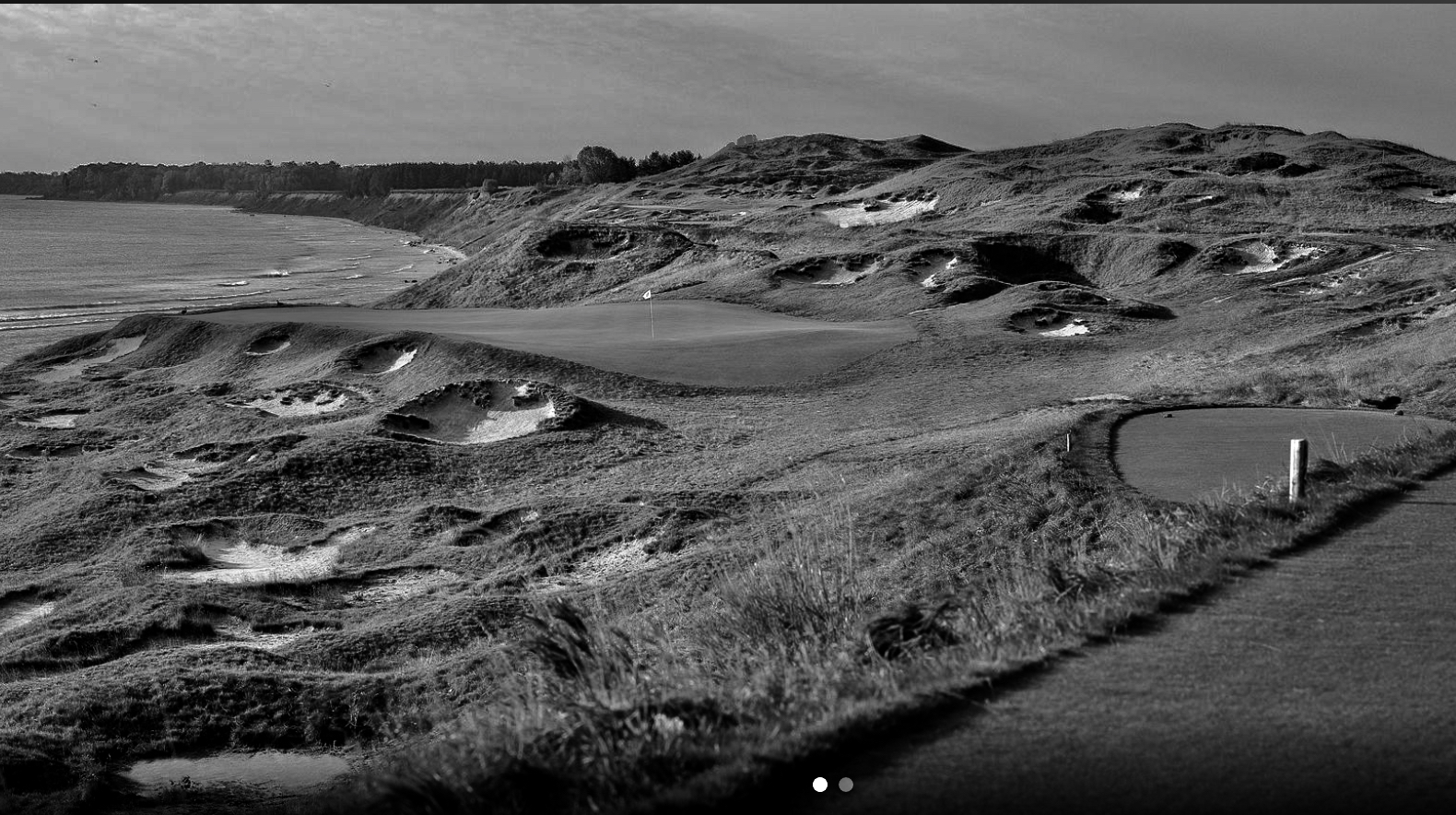
No. 3 at Whistling Straits (Straits)
I don’t know who comes up with hole titles at courses, and I also don’t know if “O’Man” is supposed to be funny, or what. If it’s a play on “Oh man,” well, then that’s terrible. It’s a nice example of a modern Redan, however.
The 188-yard hole plays from the front down to the back all the way, with just a touch of a bank along the backside to help shots at the right-front of the green filter down to flags on the inside. The true difference in day-to-day play is how far down the flag plays; it’s the second-largest green on the course and most of that is measured long-ways. At maybe 55 yards in length, the third green requires the same strategy from one round to the next, but the club required to execute that strategy will vary dramatically.
One tendency I tend to spot among Dye Redans is that the inside is where you don’t want to miss. This seems obvious; after all, that’s where the hazards are supposed to sit with a Redan, yeah? One thing I appreciate about the MacRaynor renditions is that the inner bunkers are somewhat a ruse on occasion. Because of the skate park-esque banks that Raynor often built into his Redans, going over the putting surface requires a frightening up-and-down to a green slanting against you (compare to those who miss right at Riviera’s No. 10). In these cases, it may be better to miss well short of the flag and putt along the Redan’s planned break, rather than risk a carry.
The inside of the green at O’Man is bunker-laden, like most of the property. But it’s also a fairly shallow grave, unlike Kiawah No. 14. It’s a much more playable miss than going over the green, which leaves awkward lie, both downhill and above the putting surface.
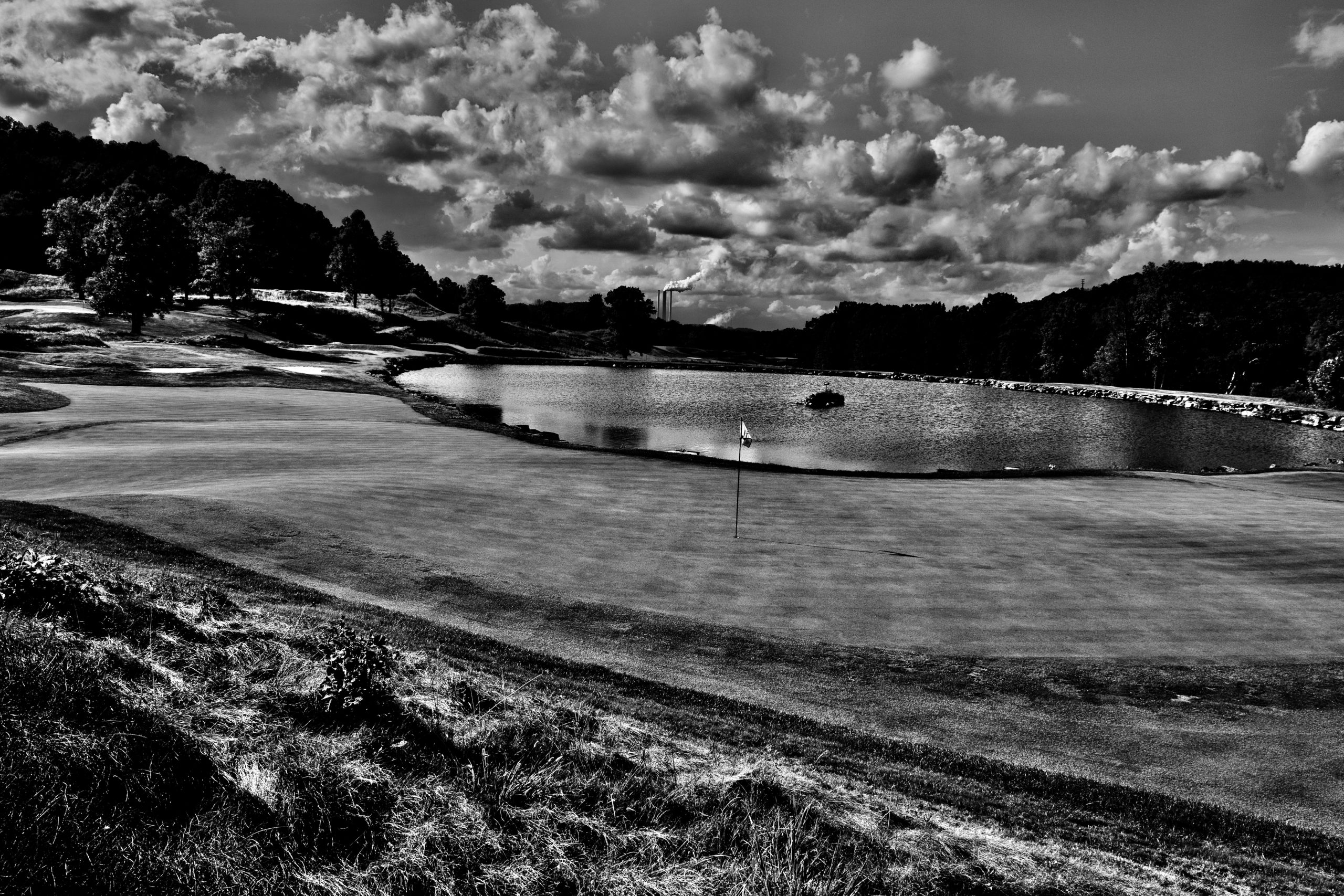
No. 4 at Pete Dye Golf Club
Pete Dye Golf Club’s West Virginia location was of little concern to James LaRosa, the mining executive who owned the property. He wanted to host a U.S. Open, which was half the reason he hired Pete Dye to design what began as “Coal Ridge.” Arguments between he and Dye regarding the placement of ponds and how they would impact event parking was among the litany of reasons why the course’s completion stretched 16 years. It has no major championship to show for those years but at least it features a particularly perverse Redan rendition.
First, this hole plays a professional distance. At 227 yards from the tips, even the biggest hitters on tour would struggle to put some Im backspin on a ball hit behind the flag at No. 4. Secondly, the lake at the elbow is considerably more intimidating than that at Sawgrass. Those wise to the concept, however, can play the green by running up to the dividing ridge at the center before it runs back down and left along the other side.
Pins on the inside of the elbow are the toughest gets, but those toward the back of the second half of the green are much more attainable. Those who really doubt their ability to keep the ball flowing right-to-left (i.e. me) can go straight at the outside of the elbow and hope that the hump there sends the ball on the correct trajectory.
One merciful addition on Dye’s part, and not one that I necessarily like: There’s a runoff area at the back of the putting surface, allowing a chip or putt back onto the green. Does it make the hole easier for high handicappers? Sure. But it also invites bashers to ignore the Redan’s entire premise and try sticking the green with a big club. It’s unlikely to work, but there’s also little penalty for failure. Getting up and down for par from the back runoff won’t be a huge challenge for a high-caliber golfer.
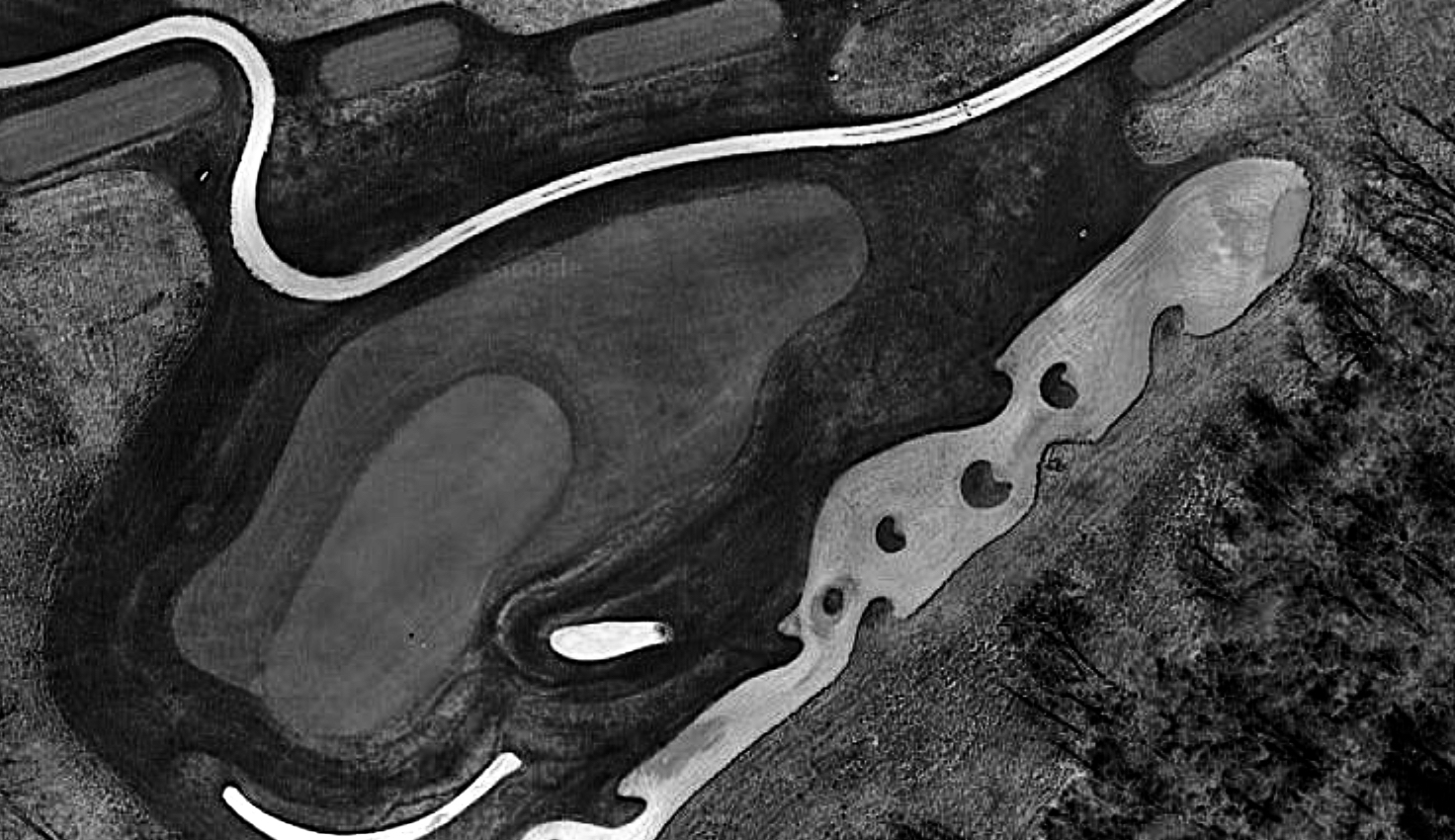
No. 13 at French Lick Resort (Dye)
We’ve looked at some some different Redan variants from Dye (PDGC) and some really different Redan variants from Dye (TPC Sawgrass). So let’s look at perhaps the most normative version of Dye’s Redan. I’d argue that French Lick’s No. 13 could pass for an entry from Macdonald or Raynor… heck, it’s not even radical enough to look like a Banks! Outside of the distance (213 yards), this Redan is well-defined, with a sharp fall down to a bunker and turf at the inside of the green.
There is one notable distinction that I haven’t been able to find comparable examples from in the MacRaynor discography. Note how much first cut Dye leaves open at the inside-front of the green. This is a unique trap aimed at those who have the right idea but play the inside of the green too sharp. Failing to catch the putting surface, or sliding off of it, will result in the ball rolling down to a short-grass collection area well below the green. From this angle, you’ll need to take the same strategy as from the tee, but using a chip rather than an iron.
Maybe that floats some players’ boats. It sounds miserable to me.
These aren’t the only Dye Redans…many of his courses come furnished with an antique piece of design, often disguised to appear otherwise. He just didn’t advertise his commitment to the template as loudly as other architects.
If I’m conversing with those who diminish the idea of templates, I usually use the anecdote that Macdonald and Raynor were the equivalent of Phil Spector: He used the same exact songwriting and production formula for decades. Do the songs sound at all the same? No.
I stand by this assertion.
But Dye didn’t want to be known as a template guy, even when he knew he was using a template. That’s why he went out of his way to differentiate his Redans. Tom Doak doesn’t mind if you know he’s borrowing from the MacRaynor playbook. You could refer to his Redans as 4/4, while Dye insisted on writing his own songs in 5/8. As with the prog rock types who might use the latter time signature, the critical assessment is varied. Is it technically impressive or is it over-the-top balderdash, where the simple, straightforward approach would have been better?
This is Dye’s take on Redans and, often, golf course design in general.